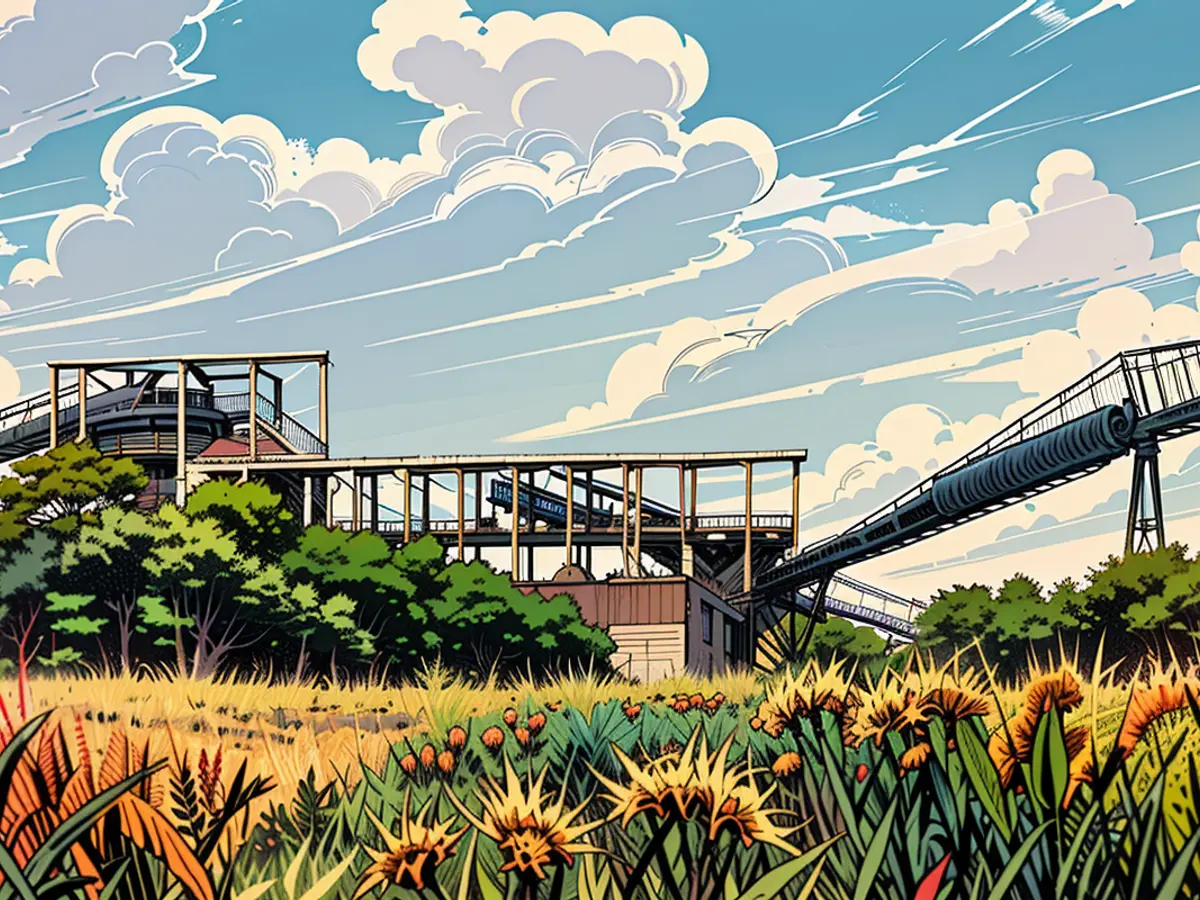- Conflict-prone building material - gravel and sand in Hesse
The dispute over sand and gravel extraction and the necessary deforestation in the Hessian town of Langen has been ongoing for years. It has been legally contested since 2013, exhausting all instances of administrative courts. This year alone, there have been at least two incidents of activism, ranging from protests to property damage. However, the clearing of the forest has long been legally secured.
The German Federal Environmental Agency has failed in the courts and accepts this. According to the Hessian Ministry of Agriculture, area-specific reforestation has already been proven for the site. And the city of Langen sees a significant improvement in quality in the area after gravel extraction and reforestation.
The number of active sand and gravel pits in Hesse is decreasing. According to the Hessian Agency for Nature Conservation, Environmental Protection and Geology (HLNUG), pits with groundwater access are increasingly being placed under nature protection or filled in and replanted. In 2006, there were still 99 active mining sites in Hesse. Currently, there are 87 active sand and gravel pits, with only 31 of them being wet mining sites, or "bagger lakes" in layman's terms. The other 56 are dry mining areas.
Many of Hesse's bathing lakes are the result of former sand and gravel mining. It is rare for mining and bathing to take place simultaneously: according to HLNUG, this only happens at the Strandbad Nieder-Roden (Offenbach district), Waldsee Raunheim (Groß-Gerau district), and Riedsee (Bergstraße district). The active wet mining at the Langener Waldsee is separated from the bathing lake by a dam.
The most important mining areas are located in southern Hesse, in pits or along rivers. "The largest sand and gravel potentials in Hesse" are in the eastern Untermain lowlands, around Babenhausen. The "extractable raw material capacity" here is between 20 and 60 meters, while in northern Hesse it is only 3 to 20 meters.
The problem is that the most productive areas in Hesse are where the population density is highest. "This results in numerous land use conflicts, which currently limit or exclude the securing of storage facilities and ecologically sensible raw material extraction from the region for the region," says the Hessian Agency for Nature Conservation, Environment and Geology.
According to the Ministry of the Environment, reforestation must be area-specific and should preferably be carried out in the same natural area or a forest-poor area. "Reforestation should ensure that the forest remains in its area and that the forest functions are fulfilled," the ministry said in response to a request from the German Press Agency.
The latest protests were again against expected deforestation for gravel extraction in the forest near Langen. There, activists had organized a vigil and built a platform between trees at a height of about four meters. In February, a group broke into the gravel pit at the Langener Waldsee and caused damage of around 50,000 euros. Conveyor belts were cut and their drive motors damaged. However, the legal situation for gravel extraction is clear. Most recently, the Federal Administrative Court rejected the BUND's appeal as unfounded in 2022.
For now, no further deforestation is planned.
For the city of Langen as well, the legal situation is clear. "There's a permit to clear 63.7 hectares," said a city spokesperson. About half has been cleared, with the rest to follow in the coming years. The regional government in Darmstadt must continually issue individual permits. "Nothing is planned for this year. Currently, nothing is planned, applied for, or approved." Additionally, it's no longer a protected forest. "It's just a regular commercial forest, with no special plants or animals." A protected forest is one considered irreplaceable due to its location, especially in urban areas and regions with little forest cover.
The Association of Hessian Business Associations sees the entire debate on gravel extraction at the Langener Waldsee as "ecological nonsense." Without local resource extraction, materials would have to be transported into Hessen. Moreover, the forest areas would only be used temporarily and later restored. Hundreds of thousands of tons of these materials are needed for construction projects and housing, which are available locally in Hessen.
The Hessian Ministry of Agriculture has confirmed that appropriate reforestation efforts have been successful in areas where sand and gravel extraction has taken place. The Association of Hessian Business Associations believes that the debate over gravel extraction at the Langener Waldsee is an unnecessary environmental concern, as local resource extraction and temporary use of forest areas for this purpose can lead to sustainable practices.








